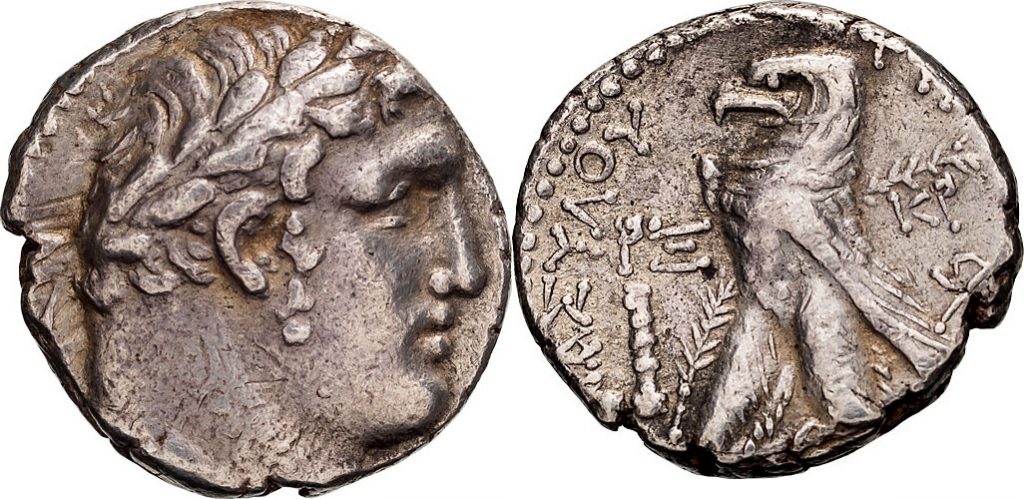Shekel of Tyre
The Shekel of Tyre was the official Jewish Temple sanctuary coin. It was also one of the most widely circulated coins during the life and crucifixion of Jesus Christ.

Tyre, a port city of ancient Phoenicia, was a center of commerce in the ancient world. Many of the coins it produced made their way to Jerusalem. The high-purity silver coins were minted between 126 B.C. and 56 A.D. as full and half shekels. Although their value was different, the design of the coins was the same.
Biblical History
During the time of Jesus, Jews were required to pay an annual tribute to the Jerusalem Temple during the Hebrew month of Adar. The tax was 1/2 shekel per male. Because many other coins circulated at the time, money changers set up in the Temple court to exchange coins.
The shekel is also referenced in many New Testament stories, such as the coin in the fish’s mouth (Matthew 17:24-27), the 30 pieces of silver paid to Judas for his betrayal of Jesus (Matthew 26: 14-15), and the large silver coins used to bribe the soldiers who left their watch at the Holy Sepulcher on Easter morning (Matthew 28:11)
Shekel Design
The obverse of the shekel features a portrait of Melkart, the Punic version of the Greek deity Herakles. Its reverse depicts an eagle with a palm branch over its shoulder, standing on the prow of a ship. While the primary design of the coins did not vary over time, the form of the dates and monograms did. The date of the issue was rendered in a formula of Greek letters that reflected how many years had passed since Tyre had achieved its independence in 125 B.C.
When Herod finished his new temple in Jerusalem in 18 B.C., he is believed to have transferred the minting of the official temple currency from the city of Tyre to Jerusalem. The coins produced in Jerusalem are smaller, thicker and more crudely minted. The “KAP” or “KP” abbreviation, which stands for Kratos Romaion (“power of the Romans”), is included on all shekels after 18 B.C. It is the official mark of Herod’s coin minted in Jerusalem.
